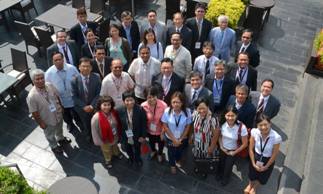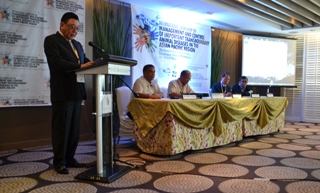 Transboundary animal diseases or TADs is a threat to many nations as it is for the Asia-Pacific Region. TADs are highly contagious epidemic diseases that can spread rapidly across borders and have the capacity to infect humans. Examples of these are bird flu, madcow disease, tick-borne encephalitis, and salmonella infections. It is thus not just a socio-economic issue but a public health concern as well.
Transboundary animal diseases or TADs is a threat to many nations as it is for the Asia-Pacific Region. TADs are highly contagious epidemic diseases that can spread rapidly across borders and have the capacity to infect humans. Examples of these are bird flu, madcow disease, tick-borne encephalitis, and salmonella infections. It is thus not just a socio-economic issue but a public health concern as well.
To discuss practical strategies in controlling the spread and managing the economic impacts of TADs in the Asia-Pacific Region, an international gathering was held last July 25-29, 2016 in Manila. This was sponsored by the Food and Fertilizer Technology Center (FFTC) of Taiwan and organized by the Philippine Council for Agriculture, Aquatic and Natural Resources Research and Development of the Department of Science and Technology (DOST-PCAARRD), and the Animal Health Research Institute (AHRI) under the Council of Agriculture, Taiwan.
Dubbed as the International Workshop on the Management and Control of Important Transboundary Animal Diseases in the Asia-Pacific Region, it was participated in mostly by veterinarians and animal science experts from Japan, Malaysia, Philippines, Taiwan, Thailand, and the USA, who shared their TAD-related knowledge, experiences, and research findings.

The gathering therefore came at an opportune time. It became a venue for the exchange of workable practices in managing TADs that would promote safe and globalized trading of animal and livestock products. Among the recommendations laid down during the workshop were the following:
- Promote among stakeholders (veterinarians, public health workers, local authorities, universities, farmers) the best practices on the management of TADs including dissemination of World Organization for Animal Health (OIE) codes and manuals to strengthen surveillance and control of animal diseases; rapid diagnosis of animal diseases, animal movement pathways, and role of vaccination in the management of TADs; inclusion of all these in university curriculum on veterinary science.
- Conduct training on establishing databases for animal profiling;
- Establish a monitoring system for the movement of animal genetic materials;
- Invest in veterinary services as part of the regional coordination mechanism between and among countries. Invite all relevant stakeholders including OIE and FAO for joint cooperation projects; and
- Encourage each country to formulate policies on animal surveillance and data and laboratory analyses of TADs.
The challenge of transposing these agreements into policy reforms for an effective and sustainable monitoring, surveillance and management of TADs is great. But with the support of regional “brothers,” it may after all be manageable.

